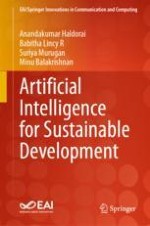2024 | OriginalPaper | Chapter
Crisis Assessment Through Satellite Footage Using Deep Learning Techniques for Efficient Disaster Response
Authors : Anandakumar Haldorai, R. Babitha Lincy, M. Suriya, Minu Balakrishnan
Published in: Artificial Intelligence for Sustainable Development
Publisher: Springer Nature Switzerland
Activate our intelligent search to find suitable subject content or patents.
Select sections of text to find matching patents with Artificial Intelligence. powered by
Select sections of text to find additional relevant content using AI-assisted search. powered by
